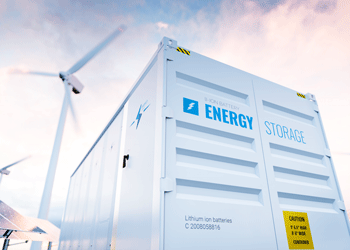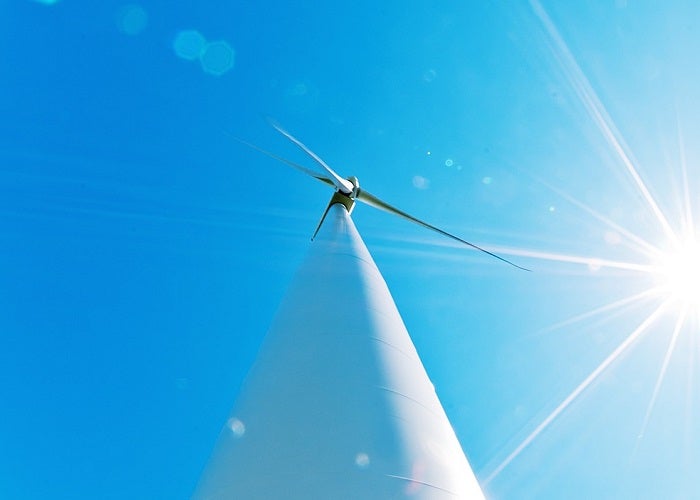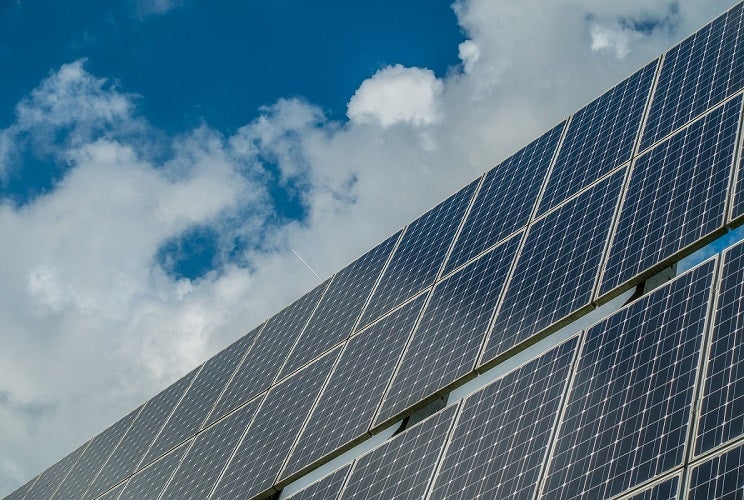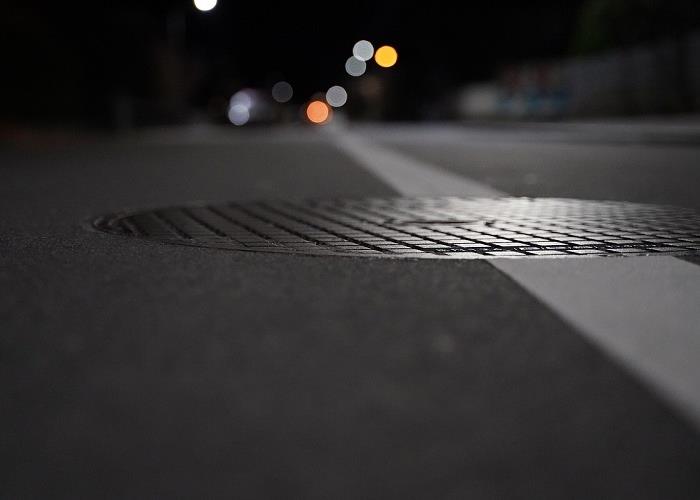Warming erodes Kuwait’s power and water reserves
14 August 2023
 More on Kuwait’s power and water sector:
More on Kuwait’s power and water sector:
> IWPP: Firms respond to Kuwait independent utilities request
> POWER: Local firm wins 250MW Subiya package
> PRIVATISATION: Kuwait thermal plant privatisation to go ahead

The temperature in Kuwait soared to 51 degrees Celsius on 1 August, sending its electricity load index up to 16,940MW. This breached its maximum expected load this year of 16,830MW by 0.7 per cent.
This year’s projected maximum load is already 4 per cent higher than the previous year's recorded maximum load. It leaves only roughly 8 per cent of reserve capacity against an available capacity understood to stand at 18,250MW.
Similarly, water consumption across the Gulf state on 2 August, when the temperature decreased to 50 degrees, exceeded production by 29 million gallons, prompting the state utility to access its strategic water reserve capacity to plug the shortfall.
The electricity consumption spike reportedly caused two feeders at the country’s main substation south of Surra in the capital to trip, which led to power outages in some parts of Zahra, a district in Kuwait’s Hawalli governorate.
Kuwait’s Electricity & Renewable Energy Ministry (MEWRE) assured the public that the maximum capacity available in the country’s electricity network during the current summer is 18,250MW, as earlier cited, and that it could safely provide up to 17,660MW.
Persistent delays
The following week MEWRE – through the Kuwait Authority for Partnership Projects (Kapp) – received prequalification applications for the contracts to develop Kuwait’s next two independent water and power producer (IWPP) projects.
The two schemes – Al-Zour North 2 & 3 and Al-Khiran 1 – will have a total combined power generation capacity of 4,500MW and a water desalination capacity of over 150 million imperial gallons a day (MIGD), which will go a long way to address Kuwait’s precarious electricity and water supply situation.
Ironically, these two schemes have been in the planning and early procurement stages since 2017 and have suffered significant delays in the intervening period.
It is the second time developers have submitted statements of qualification (SOQs) for the contracts over the preceding 11 months.
The delays have caused major frustration for some developers and contractors. One utility developer that submitted an SOQ in September last year told MEED they did not participate in the latest attempt to start the prequalification process for the IWPP schemes, without elaborating.
Others expect the country’s stakeholders to eventually approve and expedite the procurement process for the integrated power and desalination facilities.
“I’m not very optimistic, but we submitted an SOQ anyway,” another source tells MEED.
EPC projects motoring ahead
The ministry’s conventional power plant projects have been moving at a relatively faster pace. In June this year, the local company Heavy Engineering Industries & Shipbuilding (Heisco) won a contract for the phase 2 upgrade of the Subiya power plant complex in Kuwait.
Heisco saw off competition from two local companies, Alghanim International and Al-Zain United General Trading & Contracting, for the KD114.28m ($372m) contract.
The project aims to convert an existing 250MW simple-cycle plant into a combined-cycle gas-turbine plant.
In April, a consortium comprising Heisco and Japan’s Mitsubishi Power was also awarded a contract to retrofit the main thermal power generation plant at the power complex.
The contract is understood to be valued at KD90.9m. It entails the upgrade of eight steam turbines and electric generators at the Subiya power plant, which is expected to reach a capacity of 2,400MW once the project is complete.
The existing plant at the Subiya power complex was commissioned between 1998 and 2002. This implies that the steam turbines and generators in commercial operation for nearly 20 years require upgrades to continue operating and improve their performance.
Two steps forward
While the country has pledged to become carbon neutral by 2060, the state utility has yet to make any remarkable progress in procuring new renewable energy capacity.
The recent political deadlock has hampered the procurement of the next phases of the Shagaya Renewable Energy Programme (SREP), despite the award 12 months previously of the project’s transaction advisory contract to a team led by London-headquartered consultancy firm EY.
At the time, the advisory contract was understood to cover the Al-Dibdibah solar project, which will comprise SREP’s second phase, and a third phase expected to include a 720MW solar photovoltaic (PV) plant, a 1,150MW concentrated solar power (CSP) facility and a wind power farm.
Notably, two state-backed downstream operators – Kuwait National Petroleum Company and Kuwait Integrated Petroleum Industries Company (Kipic) – have launched a tender for a contract to undertake a pre-feasibility study identifying opportunities to use renewable energy in their operations.
Kuwait is also expected to make some progress on its first utility privatisation scheme, which forms part of the initiative to strengthen private sector participation in the sector.
In December last year, it was revealed that UK-headquartered Deloitte had submitted a low bid of KD1.2m ($3.9m) for the transaction advisory contract in line with the planned privatisation of the $1.26bn North Shuaiba power and water plant in Kuwait.
GCC grid
While working to boost its electricity reserves and make its electricity systems greener, Kuwait stands to benefit from the ongoing upgrade of the GCC electricity grid, through which other GCC states, such as the UAE, may decide to transmit excess clean energy.
The Al-Fadhili high-voltage direct current (HVDC) converter station upgrade in Saudi Arabia is expected to enable the exchange of 1,800MW of electricity between the six states once complete.
In October last year, the GCC Interconnection Authority (GCCIA) awarded India-based KEC International a contract for an overhead transmission line project linking the substations in Wafra in Kuwait and Fadhili in Saudi Arabia.
The estimated $120m project extends an existing double-circuit 400kV line from Al-Zour in Kuwait to Ghunan in Saudi Arabia. The line has an intermediate interconnection at Fadhili, with associated substations completed in 2009 as part of the first phase of the GCCIA network. The new project is expected to complete in 2025.
 This month’s special report on Kuwait also includes:
This month’s special report on Kuwait also includes:
> ECONOMY: Stakeholders hope Kuwait can execute spending plans
> ENERGY: Kuwait’s $300bn energy target is a big test
> BANKING: Kuwaiti banks enter bounce-back mode
> INTERVIEW: Kuwait’s Gulf Centre United sets course for expansion
Exclusive from Meed
-
 Saudi Arabia evaluates 2GW energy storage bids
Saudi Arabia evaluates 2GW energy storage bids23 October 2024
-
 Saudi Arabia receives 4.5GW solar and wind prequalifications
Saudi Arabia receives 4.5GW solar and wind prequalifications22 October 2024
-
 Oman awards $186.5m sewer network packages
Oman awards $186.5m sewer network packages22 October 2024
-
 Team offers $c1.29/kWh for 2GW Sadawi solar IPP project
Team offers $c1.29/kWh for 2GW Sadawi solar IPP project21 October 2024
-
 Ashghal tenders sewerage works
Ashghal tenders sewerage works21 October 2024
All of this is only 1% of what MEED.com has to offer
Subscribe now and unlock all the 153,671 articles on MEED.com
- All the latest news, data, and market intelligence across MENA at your fingerprints
- First-hand updates and inside information on projects, clients and competitors that matter to you
- 20 years' archive of information, data, and news for you to access at your convenience
- Strategize to succeed and minimise risks with timely analysis of current and future market trends

Related Articles
-
 Saudi Arabia evaluates 2GW energy storage bids
Saudi Arabia evaluates 2GW energy storage bids23 October 2024
National Grid Saudi Arabia, a wholly-owned subsidiary of Saudi Electricity Company (SEC), is evaluating bids for the contract or contracts to supply battery energy storage systems (bess) with a total combined capacity of up to 2,500MW.
According to a source familiar with the project, the SEC entity solicited bids directly from equipment manufacturers, which include China's Sungrow, Hithium and Huawei Technologies, among others, to supply batteries, which will be installed by an engineering, procurement and construction (EPC) contractor.
It is understood that SEC has tendered the EPC package or packages separately.
MEED previously reported that the planned facilities, each with a capacity of 500MW or roughly 2,000 megawatt-hours, are located in or within the proximity of the following key cities and load centres:
- Riyadh
- Qaisumah
- Dawadmi
- Al-Jouf
- Rabigh
The main applications for the planned bess facilities include load shifting, black start, frequency regulation and voltage support.
They are envisaged to replace part load operation of existing power plants by charging and discharging electricity according to the system load variations and primary and secondary reserves, among other potential applications.
In August, National Grid SA awarded the EPC contracts for three energy storage systems to Riyadh-based investment group Algihaz Holding.
The projects are located in Najran, Madaya and Khamis Mushait.
According to an industry source, the contracts are valued at more than $800m.
Surging growth
The overall capacity of deployed battery energy storage systems globally is expected to reach 127GW by 2027, up from an estimated cumulative deployment of 36.7GW at the end of 2023, according to GlobalData.
The global information services provider cited Chinese companies BYD and CATL and South Korean companies LG Energy Solutions and Samsung SDI among the top battery technology providers globally.
Carmakers Tesla, Volkswagen, Stellantis, General Motors, Mitsubishi Motors and Hyundai were identified as the key end markets for battery products so far.
GlobalData expects battery energy storage deployment to increase "due to a large number of countries opting for battery storage systems to enhance their power sector transformation".
https://image.digitalinsightresearch.in/uploads/NewsArticle/12779739/main.gif -
 Saudi Arabia receives 4.5GW solar and wind prequalifications
Saudi Arabia receives 4.5GW solar and wind prequalifications22 October 2024

On 22 October, utility and renewable energy developers submitted their statements of qualifications (SOQs) for the contracts to develop five renewable energy independent power projects (IPPs) in Saudi Arabia.
Saudi Arabia's principal buyer, Saudi Power Procurement Company (SPPC), issued the prequalification request for the IPPs making up the sixth round of the kingdom's National Renewable Energy Programme (NREP) on 29 September.
Firms that are understood to have submitted SOQs include international developers such as Japan's Marubeni and Jera; France's EDF Renewables, Engie and TotalEnergies Renewables; as well as Chinese and local utility developers.
The projects, comprising four solar photovoltaic (PV) IPPs and one wind IPP, will have a total combined capacity of 4,500MW.
The following schemes comprise the NREP's sixth round:
- 1,500MW Dawadmi wind IPP (Riyadh)
- 1,400MW Najran solar PV IPP (Najran)
- 600MW Samtah solar PV IPP (Jizan)
- 600MW Al-Darb solar PV IPP (Jizan)
- 400MW Al-Sufun solar PV IPP (Hail)
SPPC is responsible for the pre-development, tendering and subsequent offtaking of the energy from the projects.
US/India-based Synergy Consulting is providing financial advisory services to SPPC for the NREP sixth-round tender. Germany's Fichtner Consulting and US-headquartered CMS are providing technical and legal consultancy services, respectively.
SPPC revealed the following lowest and second-lowest bidders for the contracts to develop four solar PV projects under the fourth round of the NREP on 21 October.
2,000MW Al-Sadawi solar IPP (Eastern Province)
- L1: Abu Dhabi Future Energy (UAE)/Korea Electric Power Corporation (Kepco, South Korea)/GD Power Development (China): $c1.29 a kilowatt-hour (kWh)
- L2: SPIC Huanghe Hydropower Development (China)/EDF Renewables (France): $c1.31/kWh
Al-Masaa solar IPP (Hail): 1,000MW
- L1: SPIC/EDF Renewables (France): $c1.36/kWh
- L2: AlJomaih Energy & Water (local) / TotalEnergies Renewables (France): $c1.40/kWh
Al-Hinakiyah 2 solar IPP (Medina): 400MW
- L1: SPIC/EDF: $c1.51/kWh
- L2: Masdar/Kepco/Nesma: $c1.57/kWh
Rabigh 2 solar IPP (Mecca): 300MW
- L1: AlJomaih Energy & Water / TotalEnergies Renewables: $c1.78/kWh
- L2: Masdar/Kepco/Nesma: $c1.89/kWh
MEED previously reported that SPPC plans to award the NREP round-five contract before the end of the year.
Photo: Pixabay
https://image.digitalinsightresearch.in/uploads/NewsArticle/12774001/main0411.jpg -
 Oman awards $186.5m sewer network packages
Oman awards $186.5m sewer network packages22 October 2024
Oman's Nama Water Services has awarded several contracts with a total combined value of $186.5m for the construction and development of packages of a sewer network catering to Muscat.
The B7A contract to build a sewer network comprising a main trunk sewer and pumping station in South Azaibah in the Muscat Governate has been awarded to the local United Gulf Construction Company, which offered to build the project for $54.5m.
Nama Water Services tendered the contract in September last year. In addition to the supply and installation of pumping stations, the scope includes the construction of a 3.5-kilometre (km) gravity sewer network and property and house connection chambers.
Nama Water Services awarded a second contract – C13 Package C4 – worth $30m to the local firm Target. The main scope includes the construction of a 16km gravity sewer network with diameters ranging from 200 millimetres (mm) to 600mm in Oman's Seeb catchment. It also includes the construction of about 265 gravity sewer manholes.
Cairo-headquartered Arab Contractors won a $35m contract to construct a sewer network at the C5A and C5B areas in the Aseeb catchment in Muscat.
C5A involves the construction of a 35km gravity sewer network with diametres of 200mm-900mm and 420 gravity sewer manholes.
C5B entails the construction of a 32km gravity sewer network with similar diametres to C5A, and a further 375 sewer manholes.
Nama Water Services awarded a fourth contract to Target. Valued at $67m, it involves the construction of sewer network B7D, as part of the Bausher sewer infrastructure at Al-Ansab in Oman.
The main project scope involves the construction of a 75km gravity sewer network, 103km of property and house connection chambers and a pump station.
https://image.digitalinsightresearch.in/uploads/NewsArticle/12772678/main.jpg -
 Team offers $c1.29/kWh for 2GW Sadawi solar IPP project
Team offers $c1.29/kWh for 2GW Sadawi solar IPP project21 October 2024
A developer team that includes UAE-based Abu Dhabi Future Energy Company (Masdar) has submitted the lowest bid for a contract to develop the 2,000MW Al-Sadawi solar independent power project (IPP) in Saudi Arabia.
The consortium, which includes South Korea's Korea Electric Power Corporation (Kepco) and China's GD Power Development, submitted a levelised cost of electricity of hals 4.847 ($c1.29) a kilowatt-hour (kWh) for the contract to develop the scheme, which is located in the Eastern Province.
The second-lowest bidder is a team that includes China's SPIC Huanghe Hydropower Development and France's EDF Renewables, which offered to develop the project for $c1.31/kWh.
Saudi Power Procurement Company (SPPC) received six proposals from companies for the contracts to develop and operate four solar photovoltaic (PV) IPP projects in Saudi Arabia in August.
The projects, which have a total combined capacity of 3,700MW, are being tendered under the fifth procurement round of the kingdom's National Renewable Energy Programme (NREP).
According to SPPC, the lowest and second-lowest bidders in the remaining schemes under round five of the NREP are:
Al-Masaa solar IPP (Hail): 1,000MW
- L1: SPIC/EDF Renewables (France): $c1.36/kWh
- L2: AlJomaih Energy & Water (local) / TotalEnergies Renewables (France): $c1.40/kWh
Al-Hinakiyah 2 solar IPP (Medina): 400MW
- L1: SPIC/EDF: $c1.51/kWh
- L2: Masdar/Kepco/Nesma: $c1.57/kWh
Rabigh 2 solar IPP (Mecca): 300MW
- L1: AlJomaih Energy & Water / TotalEnergies Renewables: $c1.78/kWh
- L2: Masdar/Kepco/Nesma: $c1.89/kWh
Saudi utility developer Acwa Power is not among the 23 companies that were prequalified to bid for the fifth round of NREP projects.
US/India-based Synergy Consulting is providing financial advisory services to SPPC for the NREP fifth-round tender. Germany's Fichtner Consulting is providing technical consultancy services.
The round five solar PV IPPs take the total capacity of publicly tendered renewable energy projects in Saudi Arabia to over 10,300MW. Solar PV IPPs account for 79%, or about 8,100MW, of the total capacity.
Four wind IPPs, one of which has yet to be awarded, account for the remaining capacity.
SPPC is procuring 30% of the kingdom's target renewable energy by 2030. Saudi sovereign wealth vehicle the Public Investment Fund (PIF) is procuring the rest through the Price Discovery Scheme. The PIF has appointed Acwa Power, which it partly owns, as principal partner for these projects.
The Saudi Energy Ministry recently said that the kingdom plans to procure 20,000MW of renewable energy capacity annually, starting this year and until 2030.
https://image.digitalinsightresearch.in/uploads/NewsArticle/12768211/main.jpg -
 Ashghal tenders sewerage works
Ashghal tenders sewerage works21 October 2024
Qatar’s Public Works Authority (Ashghal) has issued a tender for the construction of the remaining works for two packages of the Al-Kheesa foul sewer network.
According to Ashghal's website, the project packages are called C2018/7 and C2017/118.
It issued the tender on 9 October and expects to receive bids by 10 November. Asghal set the bid bond for the contract at QR1.7m ($467,000).
MEED understands the project is located in the Al-Wajba area and is expected to be awarded in March 2025.
It is one of the most recent infrastructure packages tendered by the authority, which oversaw the multibillion-dollar Local Roads and Drainage Programme (LRDP) in the run-up to the state's hosting of the Fifa World Cup in 2022.
LRDP includes more than 200 road and drainage schemes worth an estimated QR53.2bn ($14.6bn).
In September, Ashghal issued a tender for the construction of a road network in the Izghawa and Al-Themaid areas in the northwest of Doha.
The project involves the construction of a single- and dual-carriageway road network in the area. The overall project is being procured in two work packages.
https://image.digitalinsightresearch.in/uploads/NewsArticle/12767589/main1835.jpg

